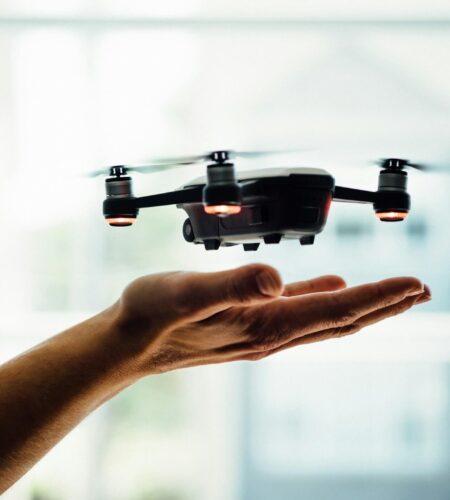learn more Drones have soared in popularity over the past decade, becoming essential tools for photographers, hobbyists, and tech enthusiasts alike. However, with great power comes great responsibility. As drone technology continues to advance, so too do the regulations governing their use. Staying informed about these rules is crucial for ensuring safe and legal drone operations. This comprehensive guide will walk you through the key drone regulations every pilot should know, helping you navigate the skies responsibly.
Understanding Drone Regulations
Why Regulations Matter
Drone regulations are designed to ensure the safety of all airspace users, protect privacy, and minimize the potential for accidents. With drones becoming more prevalent, the risk of collisions with manned aircraft, people, and property has increased. By adhering to established guidelines, pilots can help mitigate these risks and promote responsible drone usage.
Who Governs Drone Use?
In the United States, the Federal Aviation Administration (FAA) is the primary authority overseeing drone regulations. Internationally, each country has its own regulatory body, such as the Civil Aviation Authority (CAA) in the United Kingdom and the European Union Aviation Safety Agency (EASA) in Europe. It’s essential to familiarize yourself with the specific rules in your region, as they can vary significantly.
Key Regulations for Drone Pilots
Registration Requirements
In the U.S., all drones weighing between 0.55 pounds (250 grams) and 55 pounds (25 kilograms) must be registered with the FAA. The registration process is straightforward and can be completed online. Once registered, pilots must affix their registration number to their drone and carry proof of registration when flying.
Pilot Certification
For recreational flyers, no formal certification is required, but it’s highly recommended to complete the FAA’s TRUST (The Recreational UAS Safety Test) to ensure a basic understanding of safety guidelines.
Commercial drone pilots, on the other hand, must obtain a Remote Pilot Certificate by passing the FAA’s Part 107 exam. This certification ensures that pilots understand the rules, regulations, and safety measures necessary for commercial drone operations.
Operating Rules
- Altitude Limits: Drones must not be flown higher than 400 feet above ground level to avoid conflicts with manned aircraft.
- Line of Sight: Pilots must maintain visual line-of-sight with their drone at all times. This means you need to see your drone without the aid of binoculars or other visual aids.
- Airspace Restrictions: Drones are generally prohibited from flying in controlled airspace (Class B, C, D, and E) without prior authorization. Tools like the FAA’s LAANC (Low Altitude Authorization and Notification Capability) system allow pilots to request and receive approval in near real-time.
- No-Fly Zones: Certain areas, such as near airports, military bases, and national parks, are designated no-fly zones. Always check for airspace restrictions using apps like B4UFLY or Airmap before taking off.
- Night Operations: Flying drones at night requires anti-collision lighting visible for at least three statute miles. Commercial pilots must also have a waiver from the FAA to conduct night operations.
Privacy and Ethical Considerations
- Respect Privacy: Avoid flying over private property without permission and refrain from capturing images or videos of individuals without their consent.
- Avoid Crowds: Do not fly over groups of people, public events, or stadiums full of spectators. This rule is designed to reduce the risk of injury in case of an accident.
Special Use Cases
- FPV Racing: First-person view (FPV) drone racing is growing in popularity. While FPV goggles can provide an immersive experience, it’s crucial to have a visual observer who maintains line-of-sight with the drone.
- Agricultural Use: Drones are increasingly used in agriculture for tasks like crop monitoring and spraying. These applications often require compliance with additional regulations, such as those governing the use of chemicals.
Staying Updated
Drone regulations are constantly evolving to keep pace with technological advancements and emerging safety concerns. Staying informed about the latest rules is essential for responsible drone operation. Here are some tips to keep you updated:
- Follow Regulatory Bodies: Regularly check the websites of the FAA, CAA, EASA, or your local aviation authority for updates and advisories.
- Join Drone Communities: Online forums, social media groups, and local clubs for drone enthusiasts can be valuable resources for sharing information and staying current on regulations.
- Subscribe to Newsletters: Many organizations offer newsletters that provide updates on drone regulations, safety tips, and industry news.
Conclusion
Flying drones is a rewarding and exciting hobby, but it’s important to remember that with this privilege comes the responsibility to operate safely and legally. By understanding and adhering to the key regulations outlined in this guide, you can help ensure the safety of the airspace, protect privacy, and enjoy a worry-free flight experience.
Whether you’re a hobbyist taking stunning aerial photos or a commercial operator conducting business, staying informed about drone regulations is the first step toward becoming a responsible and skilled pilot.
Ready to take your drone piloting to the next level? Stay updated, fly responsibly, and always put safety first. Happy flying!
Subscribe to our email newsletter to get the latest posts delivered right to your email.

